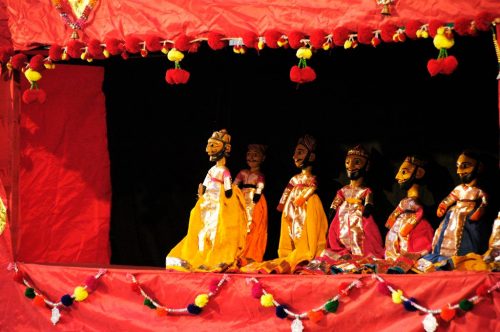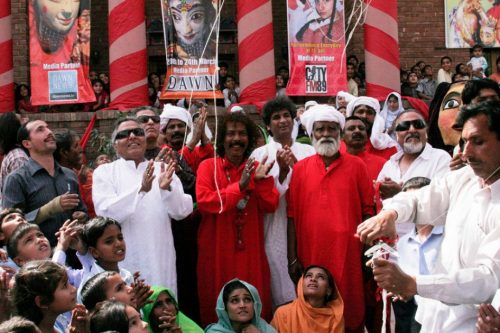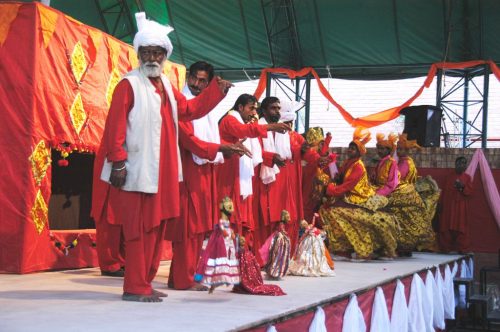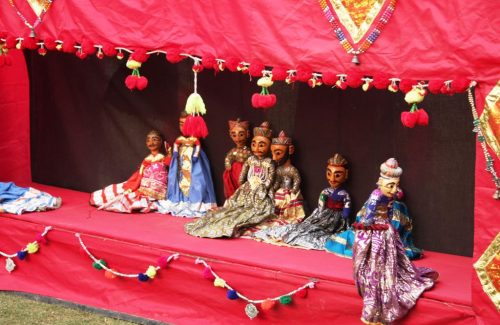Called Mela, this festival meant to safeguard and promote the dying breed of folk puppeteers has featured twelve folk puppeteers, each representing a different district of Punjab. The festival, along with visits to the Museum of Puppetry through the regular bus service, has attracted a crowd of about 25,000. To encourage public participation the Mela is held free of cost.
Folk Puppet Festivals
A number of folk groups still perform. Named after their chief puppeteer these groups are the traditional exponents of the craft. Significant groups are those headed by Muhammed Abdullah, Bashir Dhamalli, Noor Din, Billo Mai, Lally, Bahadurrah, Muhammed Shafi, Khalid Hussain, Bahadur Ali, Muhammed Afzal, Muhammed Siddique and Muhammed Bashir. Mostly hailing from Rajasthan they acquired the art of both manipulating and making puppets from their elders.
The oral transmission of knowledge had ensured a closed-door familial environment where the secrets of the profession were passed on from generation to generation. These families of puppeteers have lived a life of poverty on the outskirts of the city in temporary makeshift settlements, barely eking out an existence, and since their younger generation is not taking up this profession it is feared that very soon this old craft and form of entertainment will totally die out.
Folk Puppetry can be traced back many centuries but its recent phase can be mapped more accurately in the last five centuries, through the tales pertaining to the court of Mughal Emperor Akbar, including important happenings like the revolt of Dullah Bhatti. The folk puppeteers nearly all trace their ancestry to various areas of Rajasthan, in particular Bikaner. Called Pakhiwaas, or gipsies, they have roamed from place to place, taking part in puppetry or singing the vast repertoire of folk songs in various dialects of the language spoken in Rajasthan. They have been part of the history of this area since times immemorial. Probably they migrated to Bangla Fazil in district Ferozepur (now in Indian Punjab) sometime in the past and from there migrated to Pakistan in 1947.
The dialect in which the tales were narrated has been replaced by a more contemporary idiom and the traditional songs with rich musical input have been substituted by songs based on current film tunes. The old instruments have been replaced by newer ones, and it will not be long before computer-generated sounds and electronic manipulation will take over.
National Folk Puppet Festival which takes place on an annual basis facilitates documentation of the activities of the folk puppeteers. Major media channels are invited to cover the event. This not only provides folk puppeteers with wide coverage but also helps preserve the dying art.
This effort seems to be paying off. Seeing the number of people that enjoyed the National Folk Puppet Festival at the museum all apprehensions were laid to rest. Thousands of people attended, both young and old, attended the five-day festival giving hope that the traditional art of puppetry may survive. The main idea behind the entire initiative was to give local puppetry much needed attention.







